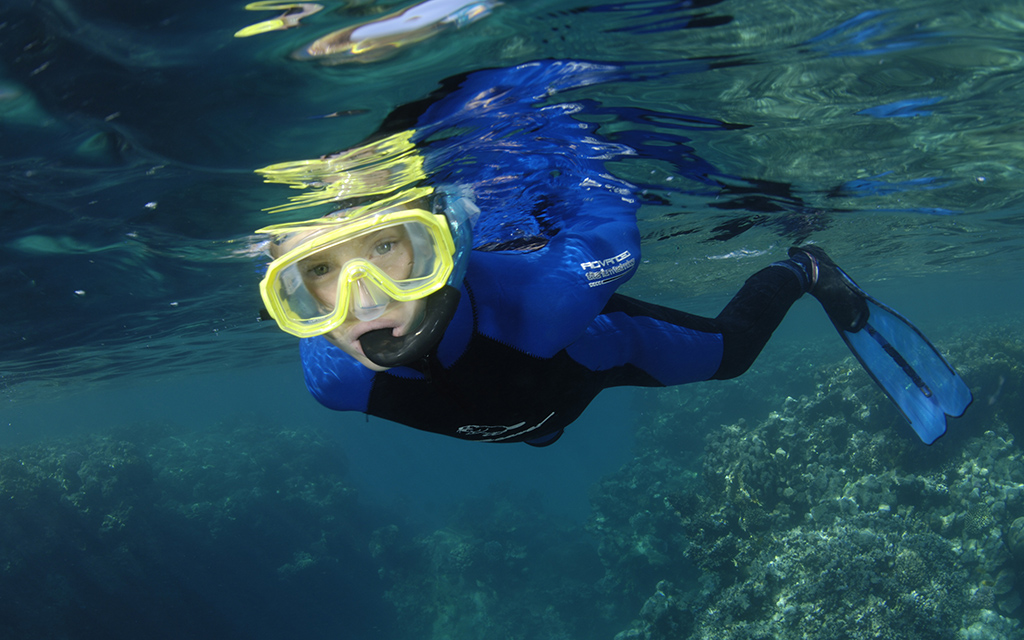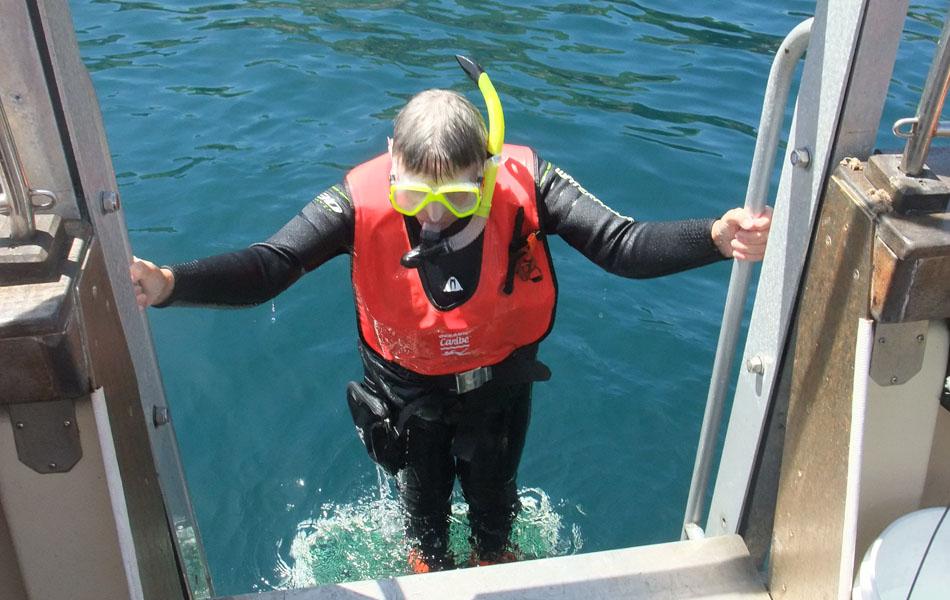
Image credit: Charles Hood
Taking a break from filming near Trieste, Andy Torbet finds a conveniently located marine park for a cheeky snorkel.
Due to filming obligations, this month’s snorkelling column does not come from the normally glamorous, azure waters of Britain. Instead, I found myself obliged to experience the snorkelling in a protected marine area in the Adriatic Sea, off the coast of Northern Italy. Such are the sacrifices I make!
I’ve been out filming along the coastline of the Adriatic near the Italian-Croatian border. The six days per week schedule, with very long days, did not allow me as much time to swim in the sea as I had hoped. However, the two days off I had over my month out there were well spent.
The vast majority of life inhabits the cracks and crevices within the sandstone sarsens nearer the beach
A 20-minute taxi ride from my base allowed me to reach the Miramare Marine Protected Area. The park, the first of its kind in Italy dating back to 1973 and named after Miramare Castle that guards the headland, is split into two sectors. The first, covering approximately 75 acres, is tightly controlled. No activity of any kind, including fishing, boats, diving or even swimming, is allowed. Entry to this area is only permissible by small groups led by one of the local marine biologists during pre-booked, set times.
The buffer zone, a further 225 acres, surrounds this. Here one can swim, snorkel and dive; but activities such as fishing or anchoring are still prohibited. Due to the unpredictable nature of my schedule, I was unable to book into a conservationist-led session. Instead, I opted for the Buffer Zone, as it seemed likely to offer the best snorkelling in the area available to me.
The entry and exit points are located down some steps cut into the bedrock by a little Italian beach café. Think Cornwall, but less Doom Bar and more Aperolspritz. From here, the 26°C waters gained depth to a maximum of around 10 metres when I was around 100 metres from shore.
Further out than that, and you’re in danger from boat traffic, some considerable in size as Trieste is just along the coast, with its deep-water, industrial port.
Soon after leaving the shore, the rocks and boulder habitat gives way to soft, sandy mud. This area has little biodiversity, but there is nevertheless a lot to see. It is home to large numbers of dark sea cucumbers, Mediterranean fan worms and the noble pen shell or pen mussel – the largest bivalve in the Med. The vast majority of life inhabits the cracks and crevices within the sandstone sarsens nearer the beach. Here, you can also spot plenty of wrasse, bream, spiny spider crab and evidence of octopus.

Octopus hiding with urchin
The ability to wear nothing but shorts, leave my towel by a sun-lounger, wade out into the warm sea and return for expresso or a post-snorkel glass of wine felt very decadent. “I could get used to this,” I pondered, basking in the Adriatic sun. And that’s exactly the problem – the novelty, the luxury would begin to pall.
Joking aside, super clear water and predictable marine life don’t quite do it for me. Life would just get dull. As much as I enjoyed my excursion in the ‘premium’ end of the snorkelling market, I still want to seek the adventure of snorkelling next to icebergs, down rivers and in mountain pools.
All that being said, everyone needs a holiday from time to time, so I might just pop back to the azure waters of Miramare before this job is done and I have to fly home. Just one more time...
Article ‘Bathing in the buffer zone’ by Andy Torbet first published in SCUBA magazine, Issue 138 September 2023. Images in this online version have been substituted from the original images in SCUBA magazine due to usage rights.

 Author: Andy Torbet | Posted 14 Oct 2023
Author: Andy Torbet | Posted 14 Oct 2023



